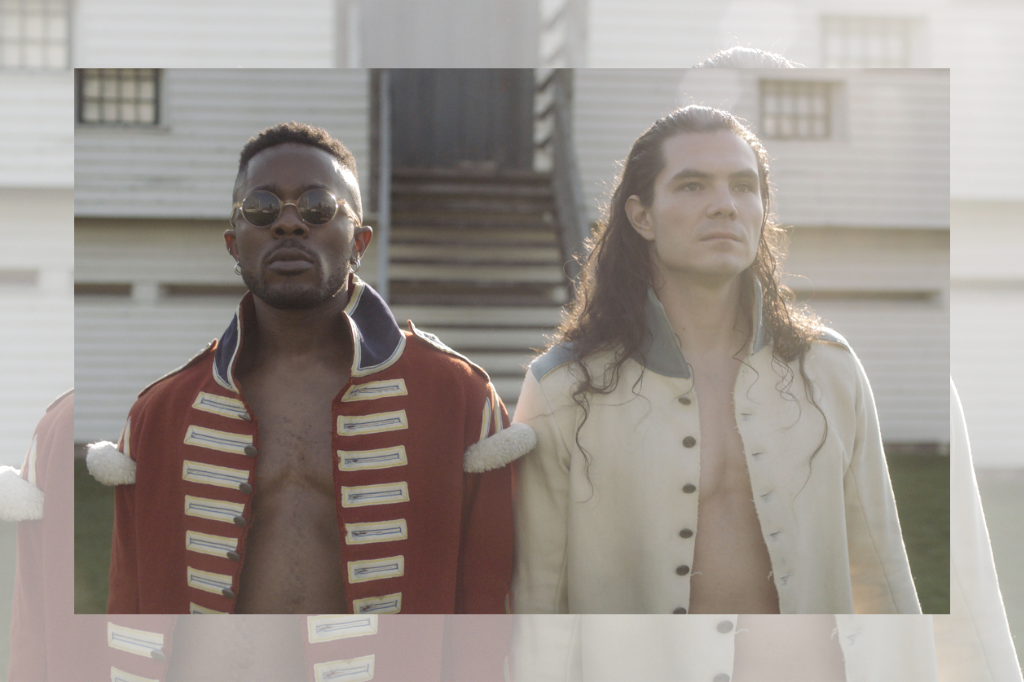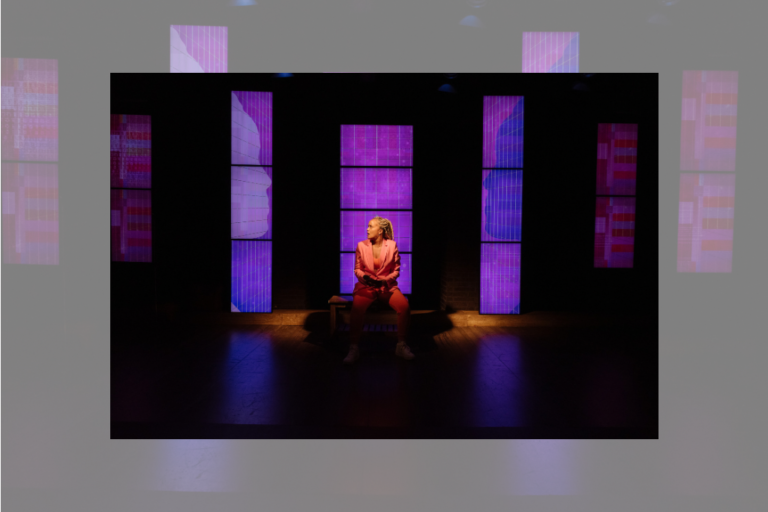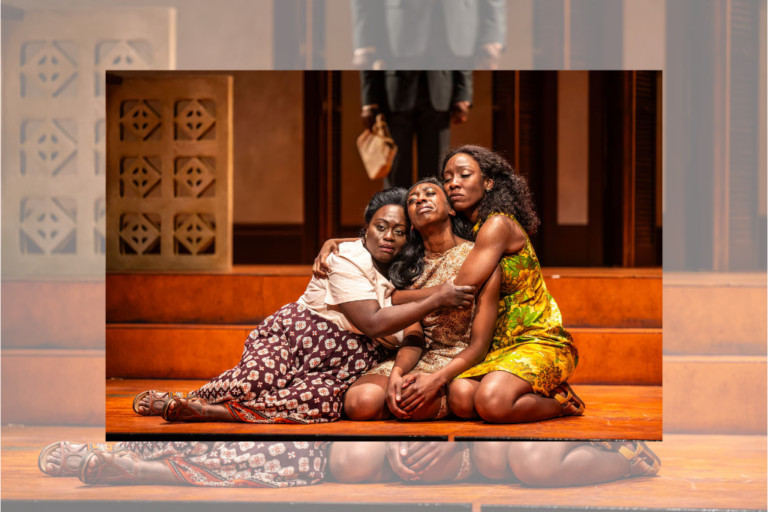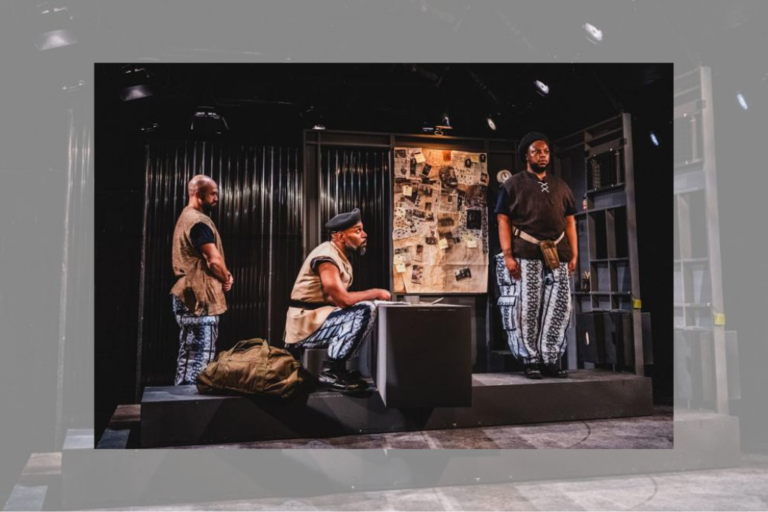Private Flowers at the Fort York National Historic Site/Toronto History Museums Artist Mentorship Showcase
Last weekend, the bubbling energy of Pride weekend in Toronto turned the city into a kaleidoscope of expression. The rainbow energy spiraling about encouraged us to reflect — not only on our lives, but on our communities. Sunday’s Pride parade honoured the peaks and valleys of the LGBTQ+ movement.
But on Pride Sunday, I didn’t take to the street to celebrate my pride. Instead, I visited the Fort York National Historic Site to watch Private Flowers, a dance video installation directed by Haui, a mixed-media artist and collaborators/performers, Rodney Diverlus and Jera Wolfe.
The installation re-tells the story of Private Flowers, a soldier who was hanged in Canada for making love to a man in 1832. As we navigate a society that still controls how we can love out loud, the creation of art that breathes a narrative that centers passion, expression and love is the reason why you need to experience Private Flowers.
The experience of Private Flowers began as I walked down the long path to the entrance of the Fork York settlement. The landscape transported me as I moved through a slightly manicured lawn to arrive at the Stone Magazine,1815, a bomb-proof building which was used to store gunpowder, rifles, and other artillery. I descended down a set of stairs, through two heavy steel doors and arrived in a small room with a curved ceiling. On the right, there was a projector pointed up to the ceiling displaying the video. The intimacy of the space was a contrast from outside, but also an invitation. Private Flowers is a dance between two men in their full expression, devoid of armour.
Haui explores the misconceptions of how we view male bodies through the lens of beauty, romance, and power. Believing that their range of expression is limited has impacted not only society, but how men have made decisions over the last hundred years. These beliefs have affected them, whether progressively or regressively. Collaborators Haui, Diverlus, and Wolfe unpack and contextualize the impact of said decisions and make them into moments of reflection throughout the video installation.
Questions like “can the power of love transform the world?” don’t feel so monolithic when you recognize that love is but a series of small actions towards joy, and by watching this video, we all get to witness it.
Like most stories, there is a beginning, a middle, and an end. But Private Flowers gives us the story in the fullness of a moment, allowing the audience to enter at any point during the video installation. Projected on the curving walls of the Stone Magazine, you experience the film aerially, not quite catching the details right away, but that’s a part of the whole experience. This play on being seen and not seen heightens the anticipation and secrecy, which centralize the importance of seeing love on all bodies.
The story of Private Flowers is not only the story of two men in love, but of the land that held them. Haui’s direction uses mirroring as a method of framing the video installation, grounding it into the past while connecting it to the present. The consistent image of descending stairs — in the video and in front of the Stone Magazine — guides the viewer down through the emotional layers of each character, while exploring the push and pull of power. The mirroring fills in the details of the characters, which helps to pull Private Flowers out of a two-dimensional story in Canadian history and into a three-dimensional experience.
The songs “Native American Ritual” by Cowes Audio and “Scorched Earth” by Maya Belsitzman blend effortlessly into each other. Beating drums start the video as Diverlus and Wolfe walk side by side, steady and military-esque. Diverlus in a red uniform and Wolfe in a white, the scene flips back and forth with their uniforms on and then with their uniforms off. Their bodies move in and out of rhythm as their relationship grows, moving from the battlefields to the bedroom.
The next scene begins with them facing each other, and as they embrace, the string instruments — the cello, the bass, the violin — enter as though to seal their forever bond with one another.
The lighting design by Daniele Guevara along with cinematography by Raymond Tuquero captured the emotional process of each character through the use of shadow and light, and the tone was euphoric. The lulling, whimsical gestures bringing the piece to its climax, left me wanting more. Although Private Flowers is seven minutes long, I stood there watching it over and over again.
Private Flowers presents you with an opportunity to reflect on Canadian history from a different lens, one that centralizes passion, expression, and love. The story of Private Flowers empowered me to engage with beauty as healing and celebrate Pride as a million little actions, gestures, and murmurings that brought us to today, and for that, I am grateful.
Private Flowers plays at the Fork York National Historic Site, 250 Fort York Blvd., through July 4. Admission is free of charge.
Intermission reviews are independent and unrelated to Intermission’s partnered content. Learn more about Intermission’s partnership model here.















Comments